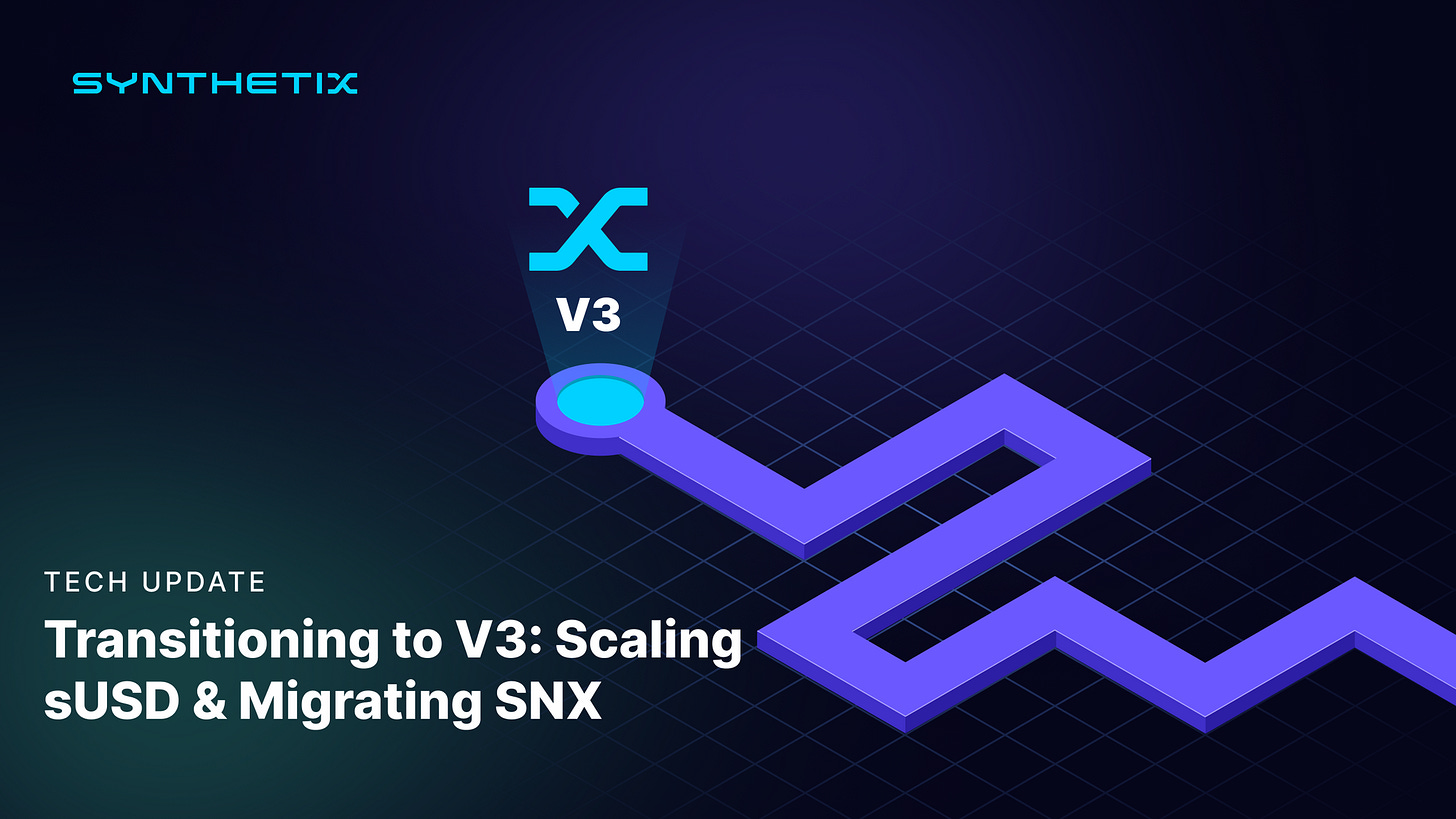[Serenity Premium] Synthetix V3 What to Expect [Initial Review May 2024]
Synthetix is one of the oldest DeFi protocols and has been maintaining a working derivative market successfully over the years. It is in the process of launching its V3 version, making the protocol more robust and efficient. This article reviews the Synthetix design concept and the improvements in V3, alongside some delta neutral opportunities.
Synthetix V2 Re-Cap
We covered Synthetix in 2021. It was so long time ago that the article was before our Substack. So here are some extracts from the docs:
Synthetix is like MakerDao and it allows users to pledge its platform token $SNX to borrow other assets, just like you can pledge ETH to borrow DAI in MakerDao. Details of its mechanism is here, and in summary:
Users can pledge SNX to borrow Synthetix's virtual assets (sUSD, sBTC, sETH, etc.) at a C-ratio of 750%. E.g. $1 worth of asset can be minted with $7.5 worth of SNX pledged
Users do not repay $1 to redeem the pledged SNX. Rather, users pay his share of the debt pool at the point of repayment. For instance, when a user mint $1000 sUSD and the total debt by all users (the summary of all users' Synthetix virtual assets minted, as the current market price) is $100,000, then he needs to repay 1% of the debt pool to redeem his SNX.
The value of debt pool varies, as its the summary of all the minted virtual assets, comprising not only sUSD but also sBTC and other assets. It could be more than $100,000 or less, at any point of time. So borrowing sUSD is not exactly borrowing; it's more like trading against the other borrowers.
With this feature, an user can swap his virtual assets any time to another virtual assets, with zero slippage, e.g. from sUSD to sBTC. Zero slippage is due to the fact that users swap these virtual assets not again any individual or market maker; but rather, its the user himself repaying partially his share of debt pool, and then borrowing the same amount in another asset. Only the composition of the debt pool changes; the value of the debt pool does not change.
Synthetix has given a table explanation on how its works:
Keep reading with a 7-day free trial
Subscribe to Serenity Research to keep reading this post and get 7 days of free access to the full post archives.


